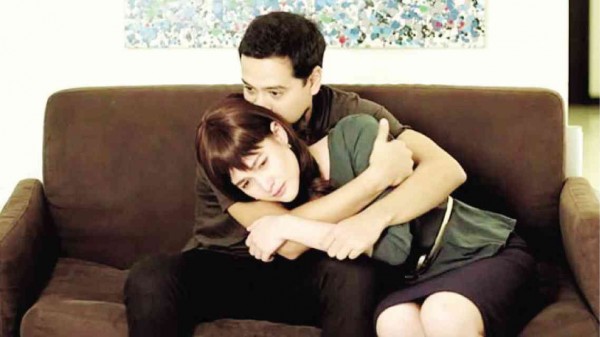John Lloyd-Bea starrer crackles with thespic pertinence
John Lloyd Cruz and Bea Alonzo discussed their contrasting acting styles when they visited the Inquirer last week to promote Cathy Garcia Molina’s “A Second Chance,” the much anticipated followup to the smash 2007 drama, “One More Chance.”
“I tried Lloydie’s more serious approach (to characterization), but I quickly realized that his ‘process’ wasn’t a snug fit for me,” disclosed Bea, whose style is more spontaneous and reactive.
In fact, it is the formidable screen tandem’s complementary differences in characterization that make their confrontation scenes crackle with thespic pertinence and power. The movie lays the quotable quotes on thick (as if Popoy and Basha Gonzales, the beleaguered married couple they portray, armed themselves with poetic verses before going to battle)—but, you forgive the production’s heavy-handed approach to its duo’s tear-jerking moments, because John Lloyd and Bea make their lines matter!
Seven years ago, Popoy Gonzales (Cruz) and Basha Eugenio (Alonzo) thought they’d ride happily into the sunset, but they soon realize that Happily Ever After requires more than just compatibility and love—it also demands openness, consistency and mutual respect.
Molina effectively captures the strain that increasingly develops between the couple as they grudgingly realize that marriage isn’t all it’s cracked up to be. Welcome to the real world, where life is no fairy tale—and everyone isn’t created equal!
Overarching ambition
The film tells a pretty straightforward tale about an unrealistic optimist who falls under the weight of his overarching ambition—and drags his marriage crashing down with him! We won’t reveal any more details to avoid spoiling the “mushy” fun for you.
Suffice it to say that Bea and John Lloyd have their work cut out for them, as they’re forced to deal with Popoy’s inner demons when his predicament takes an increasingly melodramatic turn.
Even then, the dramatically erudite John Lloyd remains an effective emotional conduit as he carefully limns his character’s inspiring highs and disheartening lows with care and stirring clarity.
Bea does even better, because she never allows herself to wallow in self-pity—you can sense the never-say-die spirit rallying behind Basha as she tries to make sense of the unthinkable situation she suddenly finds herself in.
As the drama queen tacitly explores her character’s contentious dilemma, she just as effectively proves that she is her generation’s finest actress—and comes up with a crackerjack portrayal brimming and bristling with white-hot passion and intensity.
John Lloyd and Bea deliver must-see performances—two of the year’s most accomplished characterizations—that keep the film viewable despite its dramatic excesses.
If you want a good cry, Molina’s catharsis-inducing drama is for you. It pulls no punches as it tackles its intersecting themes, but it tries too hard to make sure that no stones are left unturned as it unravels Basha and Popoy’s marital woes—and the strain shows.
That said, the movie still deserves to be seen because of its acting highlights, and its early rom-com sequences that are cleverly treated with swoonsome flourish.
It lacks briskness and judicious brevity (at more than two hours long). By the time it wrapped up its perfunctory finale, we were too emotionally drained to “celebrate” its angst-leavening moments of romantic panacea: “A Second Chance” is insightful but ultimately ponderous.
